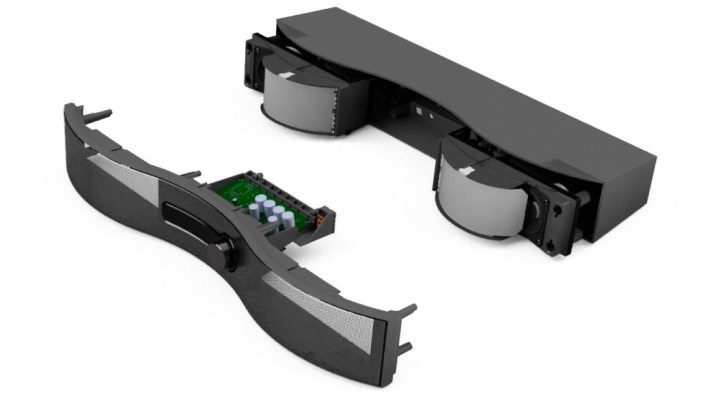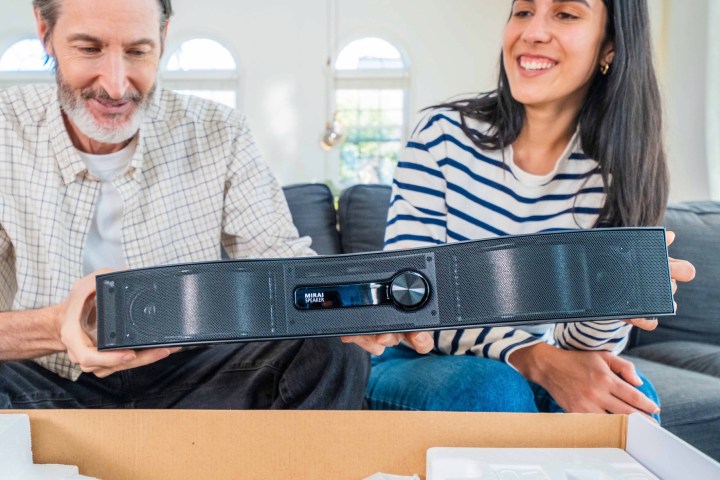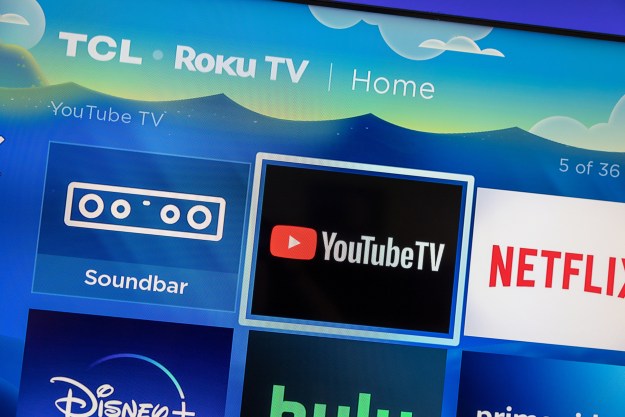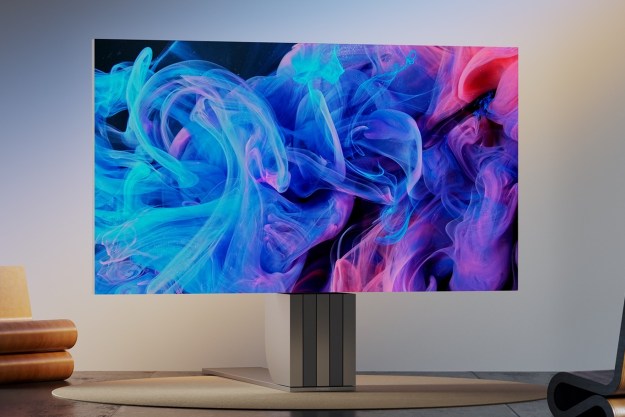
You’re not imagining it: dialogue quality for movies and TV shows has been deteriorating due to how our favorite streaming services handle compression. And while there’s no universal fix on the horizon, there is a new tool that might help restore some of the lost details. Japan’s Soundfun has released its newest Mirai Speaker, a $300 soundbar that leverages unique curved speaker diaphragms. Soundfun claims the Mirai can deliver clearer audio and dialogue without pushing volume levels through the roof.
You’ll be able to order the soundbar via Soundfun’s website or Amazon later in November.
- 1. Can’t hear your TV show’s dialogue?
- 2. Maybe a Mirai Speaker will help.
- 3. And then you’ll be happy. Right?
Though the Mirai Speaker is Soundfun’s first stereo soundbar, it’s not its first dialogue-enhancing, curved-speaker product. It debuted its technology via an Indiegogo campaign in 2022, using a much smaller, mono-only speaker that only worked with TVs that had an analog output like a headphone jack. We could only find one published review, which was decidedly mixed in its appraisal of the first Mirai effort.

The new Mirai Speaker changes up the original formula by positioning the curved speakers sideways instead of vertically. It also gets a much-needed optical input to go along with its analog input.
The principle at play, however, remains unchanged. The curved diaphragms are intended to clarify spoken content for those who have hearing difficulties, while also spreading sound more efficiently across a wide and deep space so that everyone in the room can hear clearly.

The included remote gives a strong clue as to who the Mirai is primarily aimed at. With just three buttons — volume up/down, and mute — the simplified layout will appeal to an older demographic that just wants to hear their TV shows and movies clearly.
The Mirai Speaker isn’t the first soundbar designed specifically for dialogue enhancement. ZVOX also makes a line of soundbars, including the AV157, that promise similar benefits, but instead of using special drivers, ZVOX leverages its own EQ profiles to boost certain frequencies.
Editors' Recommendations
- You Asked: Soundbars vs. receivers, TVs with no speakers, and car stereos
- What is mini-LED TV? How smaller, brighter LEDs can deliver better TV picture quality
- New My Netflix tab looks to make streaming on the go a bit easier
- Chromecast with Google TV makes the leap to Android 12
- LG’s 42-inch LX3 OLED TV can bend when you want it to







